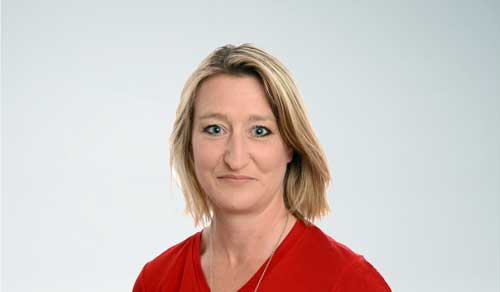New pharmaceuticals to treat sickle cell disease (SCD) are steadily improving the health and wellbeing of many people living with this chronic disorder.
Gene therapies in clinical trials are curing some SCD patients, offering hope to those who suffer from the disease’s debilitating pain and complications. This article explores the causes and complications of SCD and examines new and emerging therapies likely to improve future morbidity and mortality rates.
Sickle Cell Disease
Sickle cell disease is a genetic disorder caused by a mutation in the hemoglobin (Hgb) beta (β) gene inherited from both parents. In 1949, Linus Pauling demonstrated that the abnormal protein hemoglobin S (HbS) was responsible for sickle cell disease (SCD). If this abnormal protein is inherited from only one parent, resulting offspring will be born with the sickle cell trait (HbAS) but will never develop the disease. In fact, the majority of SCD carriers are unaware of their status.1
β-globin is required to produce hemoglobin, an iron- rich protein that shapes red blood cells and facilitates the passage of oxygen through blood vessels. HbS is produced when the hemoglobin β-gene, which encodes the protein β-globin, has a single nucleotide polymorphism (SNP).2 This genetic mutation, which comprises an amino acid substitution of valine for glutamic acid, results from a single nucleotide base change of GAG to GTG at codon 6 on chromosome 11, known as the rs334 mutation. The substitution causes the β-globin protein to misfold, producing deoxygenated hemoglobin and abnormal sickle- shaped red blood cells, a condition known as sickle cell anemia (HbSS), the most common cause of SCD.1,3
Incidence and Prevalence
Today, an estimated 25 million people globally live with the disease. Roughly 5% of the world’s population carries trait genes for hemoglobin disorders such as SCD.4 The disease is most prevalent in those of African descent, occurring in one out of every 365 Black or African American births.5 Around 8% of this population have the sickle cell trait.6
In the US, approximately 3,000 babies are born annually with the disorder, and around 100,000 Americans are living with SCD.7 Figures are lower in the UK, where around 300 babies are born each year with SCD, or approximately one in every 2,000 births, and about 12-15,000 people are living with the disease.6,8
Diagnosis and Complications of SCD
SCD is usually diagnosed during newborn or prenatal screening using hemoglobin electrophoresis, which can identify different types of hemoglobinopathies,9 including HbSS, sickle cell β-thalassemia (HbS/β0) and sickle cell-hemoglobin C disease (HbSC).10
A sickle cell crisis, known as a vaso-occlusive crisis (VOC), occurs when abnormally shaped red blood cells stick together and create blockages in the small blood vessels. Triggers for these occurrences include cold temperatures, dehydration, excessive exercise, tobacco smoke and high altitudes.4 Symptoms of sickle cell crisis include anemia and severe pain; how- ever, damage occurs to the heart, kidneys, liver, lungs and spleen over time. Even without a VOC, inflammation markers can include inflammatory cytokines interleukin (IL)-10, IL-4 macrophage-inflammatory protein and tumor necrosis factor alpha, as well as above-normal values of neutrophils, monocytes and platelets.1,7
Between 50-60% of people living with SCD develop end-organ disease, and around 30% of adults prog- ress to chronic renal failure.11 Patients are at increased risk of elevated tricuspid regurgitant jet velocity, elevated N-terminal pro-brain natriuretic peptide (NT-pro-BNP) levels, and long QT syndrome, which can lead to arrhythmias, asthma, hemolysis (destruc- tion of red blood cells) and acute chest syndrome, causing pain, cough, fever and low oxygen levels.12
Currently, 1 in 4 people with SCD will suffer a stroke by age 45,11 and 11% of SCD sufferers, including young children, will experience stroke by age 20. However, it is estimated that up to 34% of people with SCD show evidence of some form of stroke (including silent cerebral infarcts) by age 14. As a result, health care providers use transcranial Doppler to screen SCD patients age 2 years and older who have the highest stroke risk.9
Pulmonary hypertension is an additional complica- tion of SCD with an incidence of 6-10%, resulting in a mortality rate of 2-5%. SCD inpatients have a 50-fold to 100-fold higher risk of pulmonary embolism compared to those without SCD. Eye complications are a further issue: up to 70% of people with SCD experi- ence occlusion of the peripheral retinal vasculature.9
Unfortunately, obtaining coverage is often untenable for SCD patients. Many insurers cannot offer life or critical illness cover due to the multiple complications that can arise, while others can provide only limited cover at a very high premium.
Life Expectancy and Mortality
The introduction of prenatal testing, newborn screen- ing, prophylactic antibiotics, vaccination against Haemophilus influenzae type b and Streptococcus pneumoniae, early screening for stroke risk using transcranial Doppler, and new drug treatments has dramatically increased life expectancy in recent decades. Childhood mortality is now rare, with 95% of children with SCD reaching age 18.12 However, in parts of Africa, 50-90% of children with SCD will die before turning five.6 US statistics show that in 1979, the median age at death for people with SCD was 28 years.13 Today adults living with SCD now have an average life expectancy of 54 years, around 20 years less than the general population.12
Treatments
Several drugs are now approved to treat SCD. These medications aim to reduce the frequency and severity of sickle cell crisis, improve hemoglobin levels and decrease the need for blood transfusions.11
In 1998, hydroxyurea (HU) became the first drug approved by the US Food and Drug Administration (FDA) for adults with SCD. The European Medicines Agency (EMA) subsequently approved hydroxyurea in 2007 under the name Siklos.3,14 The medication promotes fetal hemoglobin (HbF) induction, normally only produced in fetal and early life, after which an adult globin gene takes over the role of hemoglobin. Research estimates that as little as a 20% level of HbF is sufficient to alleviate the symptoms of SCD. Hydroxyurea also helps reduce neutrophil count, leucocyte adhesion and pro-inflammatory markers.1
L-glutamine (Endari), approved in 2017 by the FDA, is not yet authorized by the EMA. Since sickle cells absorb L-glutamine to a greater extent than normal red cells, supplementing with L-glutamine can help improve glutamine uptake in the sickled cells, which in turn helps combat oxidative stress. A Phase 3 study showed that mean cumulative days in hospital de- creased by 41%, frequency of VOCs decreased by 25%, and incidence of acute chest syndrome decreased by over 50% for participants given L-glutamine.1
The FDA and EMA subsequently approved crizanli- zumab (Adakveo). The drug is a monoclonal antibody delivered by intravenous infusion to block P-selectin, responsible for the adhesion of sickle cells that cause VOCs.7 Voxelotor (Oxbryta), authorized by the FDA in November 2019 and the EMA in February 2022, decreases VOCs by reducing the likelihood of sickle cells binding to each other, thereby increasing oxygen supply.15,16
Curative Therapy
Until recently, an allogeneic hematopoietic stem cell transplantation was the only way to cure SCD. Transplanted stem cells later mature to become red blood cells. The procedure is typically performed only in SCD patients who are younger than 18, have a history of stroke, multiple episodes of acute chest syndrome or recurrent VOCs. However, only about 25% of patient siblings will be a human leukocyte antigen (HLA) match, for which transplant successfully cures SCD in about 85% of cases.15 Survival is 100% at 1 year and 81% at 5 years.6 For patients receiving non-sibling donor transplants, overall survival at 1 and 2 years is significantly lower at 86% and 79%, respectively.7 Toxic chemotherapy from the transplant process can lead to early mortality, and the transplantation also carries a risk of graft rejection, secondary malignancies and infertility.15
New gene therapy, much of it available only through clinical trials, is curing many participants of SCD.
There are four types of gene therapy used to treat SCD:
- Gene Addition – A non-sickling globin gene is delivered to the stem cells using a viral vector, but the original HbS gene remains unaltered.
- Gene Editing – This therapy targets the BCL11A gene, a significant repressor of the γ-globin gene that produces HbF. An enzyme cuts the DNA and induces double-stranded breaks. The resulting insertions and deletions restart the body’s ability to produce HbF and suppress HbS production.
- Gene Silencing – A viral vector delivers antisense oligonucleotides (ASOs), targeting messenger ribonucleic acid (mRNA) to prevent the produc- tion of certain proteins by silencing the BCL11A gene, thereby increasing HbF production and suppressing HbS production.
- Gene Correction – A guide RNA identifies the mutation to cut and inserts a correctly sequenced DNA template to stop HbS production and activate HbF production simultaneously. This method combines gene editing and gene addition techniques.
How Do Gene Addition and Gene Editing Work?
To add new genetic material, stem cells are first collected from a patient’s bone marrow or via a blood sample using a medication called plerixafor, which releases stem cells from the bone marrow into the bloodstream. Once the stem cells have been released, the procedure uses a harmless viral vector to insert the new genes into the stem cells. The patient then receives chemotherapy to prepare the bone marrow for engraftment of the new stem cells, which are delivered into the person’s bloodstream via blood transfusion.
While clinical trials have shown significant success to date, concern remains that introducing genetic mutations could potentially disrupt other genes and cause cancer in later life. One product of interest is LentiGlobin. In clinical trials, a one-time treatment has been found to consistently increase normal red blood cells, thereby reducing VOCs in people with SCD.2
Gene editing is designed to shut down the mutated adult globin gene and turn on HbF, or to introduce a new or modified gene using a viral vector to deliver the gene editing technique known as clustered regularly interspaced short palindromic repeats (CRISPR)/CRISPR-associated protein 9 (Cas9). The Cas9 enzyme cuts through double-stranded DNA, producing insertions or deletions that disrupt the existing sequence.3 Gene therapy could cost an estimated $500,000-$700,000 per person, which insurers might be hesitant to cover.15 However, the estimated cost is significantly lower than the lifetime expense of treating a person with SCD, which is close to $2.7 million.17
Update:
On December 8, 2023, the FDA approved the first cell-based gene therapies, Casgevy and Lyfgenia, for treatment in patients with SCD aged 12 and older. Casgevy is the first FDA-approved therapy for any condition utilizing CRISPR genome editing technology. While Casgevy modifies a patient's hematopoietic (blood) stem cells using gene editing, Lyfgenia genetically modifies a patient’s blood stem cells to produce a gene therapy-derived hemoglobin. With Casgevy, 93.5% of patients were free of VOCs for 12 consecutive months, while 88% of patients on Lyfgenia had complete resolution of vaso-occlusive events between 6-18 months following infusion post-editing.18
Conclusion
The introduction of newborn screening, prophylaxis vaccines, antibiotics and new drug treatments has dramatically improved survival in SCD patients. These therapies are helping to prevent organ damage and early mortality, particularly in children. Despite promising therapies, overall mortality of patients with SCD remains 20 years less than someone without the disease. It is hoped that revolutionary gene therapies now in clinical trials will be able to cure more SCD patients. The resulting improvements in morbidity and mortality rates could allow insurers to offer cover more widely and at more favorable terms for people living with SCD.



